On your visit to Greece, there’s a good chance you’ll pass through Piraeus. There’s an equally good chance you won’t slow down to check out this port city, using it instead as a throughway between Athens and the Greek Islands as do millions of tourists each year. But Piraeus has more to offer than its busy boat docks and traffic jams. It has picturesque neighborhoods, hilltop restaurants with amazing views, and some of the most incredible seafood the country has to offer. Here’s why Piraeus should be a stop, not a pass-through, on your itinerary.
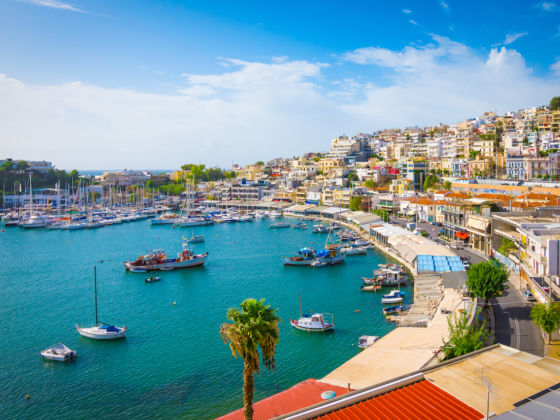

Why You Should Take Some Time to Explore Piraeus on a Trip to Greece
You can admire fancy yachts at Pasalimani.
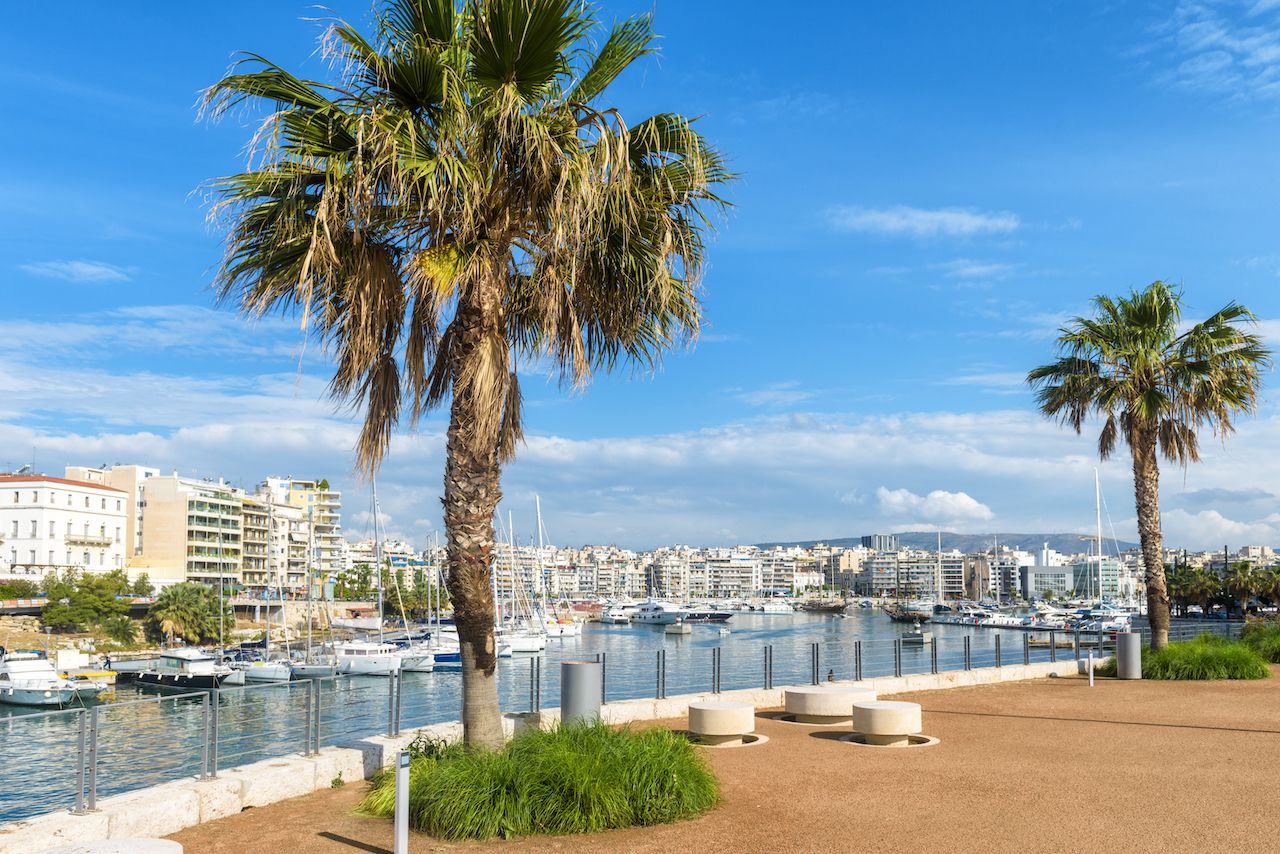
Photo: Viacheslav Lopatin/Shutterstock
A short jaunt from Piraeus’s main port you’ll come across a small scenic harbour, typically filled with fancy yachts gently swinging at the docks. Zea Harbor, or Pasalimani as locals call it, is known for being the cosmopolitan side of town, an engaging neighborhood lined with tavernas, cafes, and restaurants spread out across the oceanfront.
Pasalimani is the place to head for a leisurely afternoon walk or a romantic dinner by the sea. Opposite the harbor where the Stone Clock stands, a small square is a typical meeting point for younger people starting their evenings soon after the bars open their doors. At the west end of the harbor you’ll find Zea Marina, a famous docking spot for high-end luxurious vessels. Further down the way, the city’s Hellenic Maritime Museum is a good destination for your shore-side stroll.
Mikrolimano buzzes with cocktail bars.
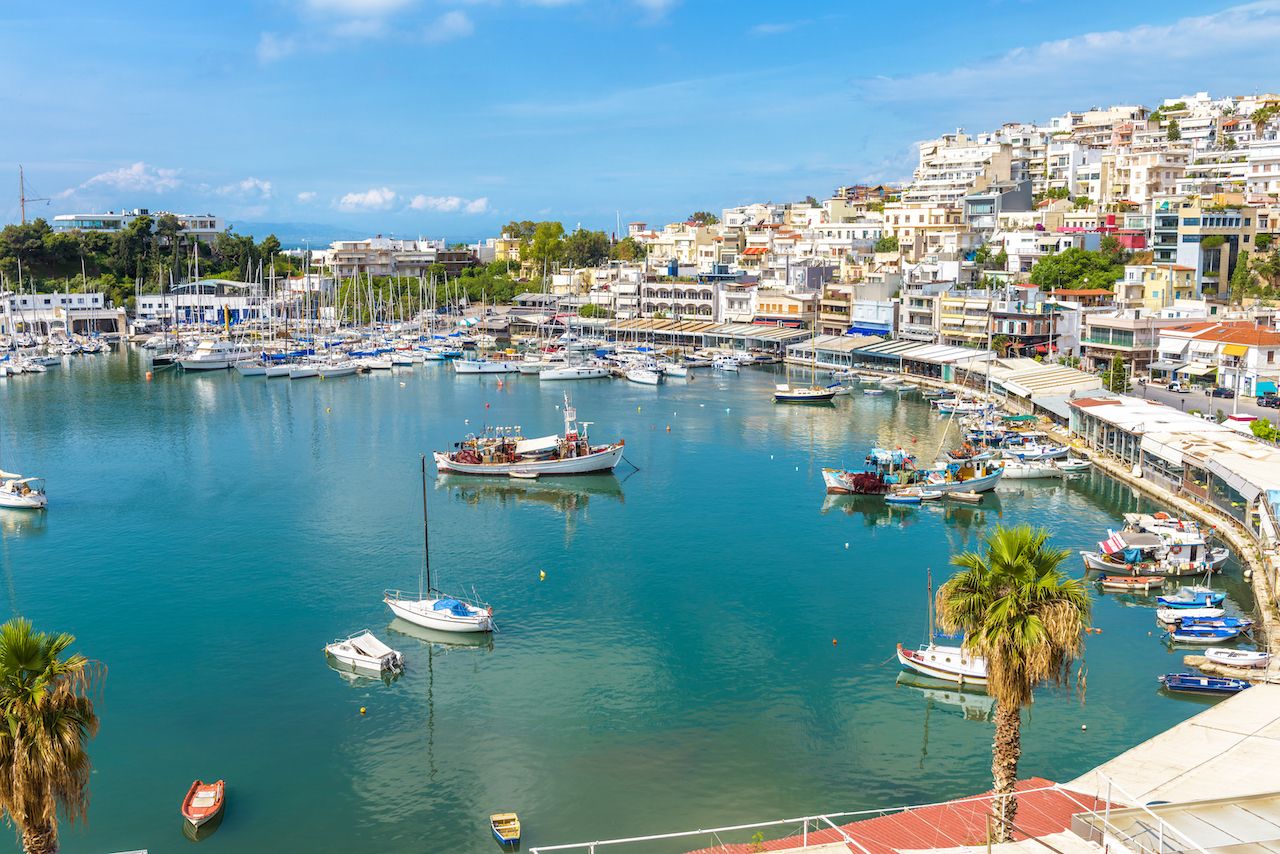
Photo: Viacheslav Lopatin/Shutterstock
Only a few minutes away from Pasalimani you’ll find Mikrolimano, which means “small port” in Greek. It’s an old traditional harbor that might not be as large or as lush as Pasalimani, but some would argue it’s twice as charming. Here, fancy yachts give way to tiny fishing boats, and posh cafes become traditional tavernas.
Mikrolimano is also the place for high-quality seafood, with several restaurants serving a variety of maritime delicacies at seaside tables with sweeping views. One of our favorite spots is Istioploikos restaurant, which serves up excellent local dishes alongside an unforgettable ocean view. And don’t let Mikrolimano’s laid-back afternoon atmosphere fool you. Come sundown, the harbor turns into a nightlife hotspot with fish joints ceding the attention to hopping cocktail bars.
Seafood is a cultural experience.

Photo: rawf8/Shutterstock
Piraeus has been a fisherman’s town for countless generations, something you’ll gather as you walk by the docks. Your culinary experience should start at a traditional tavern filled with locals rather than a sophisticated restaurant packed with tourists. You may not understand the menu, but there’s no reason to panic. Many tavernas offer a more passive experience. In most cases, there is no menu, and the waiters tell you what you want to order as a fresh catch of fish comes in daily, and that’s what’s on offer.
You’ll know you’re in the right place by the dim lights, huge wooden wine barrels that serve as decor, and the strong smell of calamari in the air. There’s also the telltale sound of 1950s Greek music on the speakers; these tavernas aren’t much for modern jams. You’ll be surprised to find out how linguistic barriers seem to vanish as owners are known to fill your glass with red wine and spark a lengthy hand gesture conversation.
The museums are unique.

Photo: Nikolaos Tamvakis/Shutterstock
Even though they’re often overlooked by visitors, Piraeus is home to some of the country’s most unique museums, which reflect the region’s maritime history and rich culture. Of course, as is the case with most Greek destinations, the most famous among them is the Archaeological Museum. Housed in a two-story building, this institution features excavation findings sorted into chronological order in 10 different rooms, starting from the Mycenaean and Minoan eras.
The Hellenic Maritime Museum is dedicated to maritime traditions and highlights the city’s naval spirit and maritime activities through maps, flags, photographs, and century-old logbooks. Lastly, the Electric Railway Museum, founded in 2005, was a labor of love for a former railway worker. In collaboration with the railroad company, this retired railman gathered thousands of items — including old tickets, photographs, leaflets, and even an old carriage — that are now exhibited in this small space next to the train station.
Authentic neighborhoods offer stellar views.
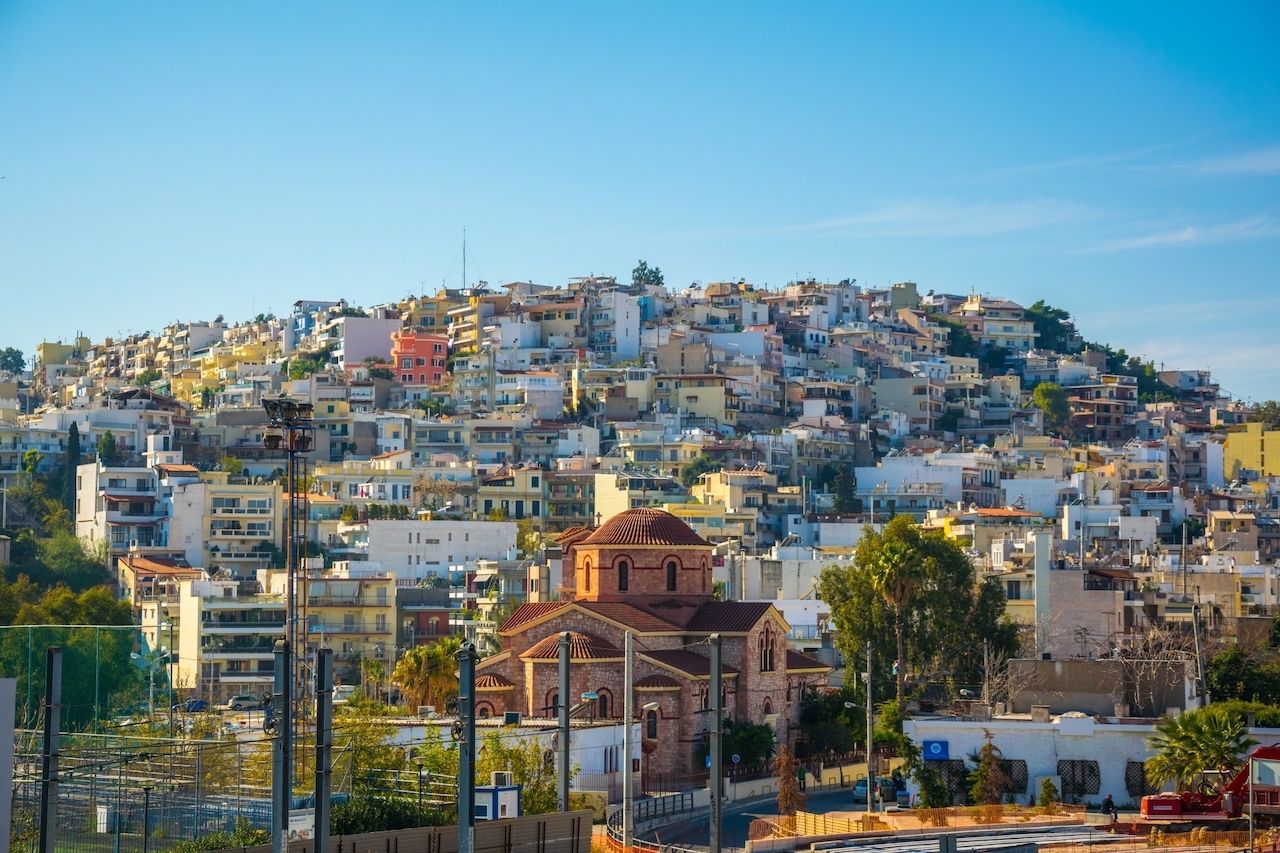
Photo: trabantos/Shutterstock
Just above the small harbor of Mikrolimano you’ll find the hilltop district of Kastella, an authentic Greek neighborhood full of bright colors and cozy cafes. Its narrow streets and small-town atmosphere will make it hard to believe that you are still in the city and not on some tiny Aegean island. Take some time to explore the little shops, admire the neo-classical architecture, and savor the vista from Prophet Elias Church that stands majestically on top of the hill. At one of the balconies overlooking the bay, try the local favorite drink: an ice-cold cappuccino with cinnamon or chocolate.
The Sunday flea market holds a treasure trove.
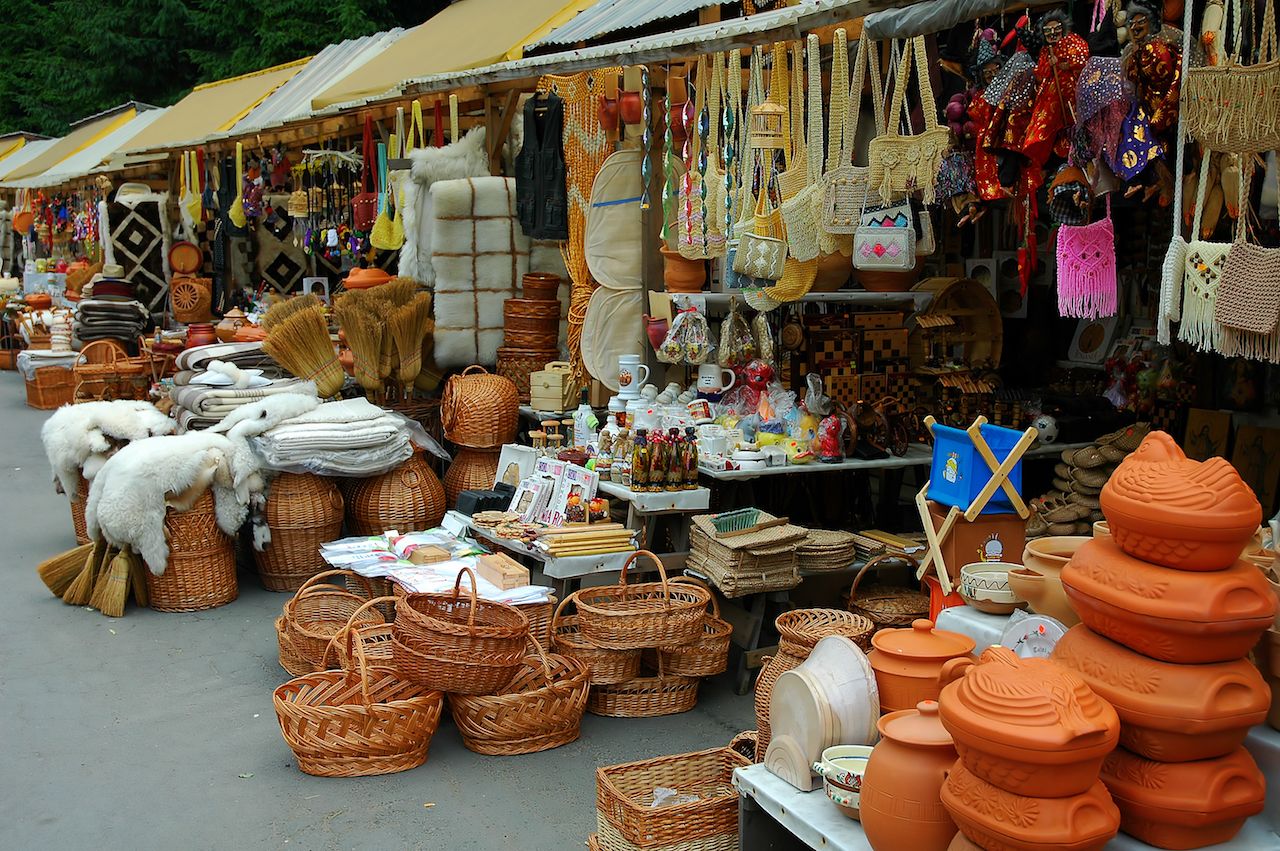
Photo: Alin Popescu/Shutterstock
If you’re lucky enough to be in Piraeus on a Sunday with good weather, make sure to take a stroll through the flea market that takes place right next to the train station. Hone your bargaining skills and get ready to dig deep for records, jewelry, books, electronics, small furniture, and anything else that could become the best souvenir you’ve ever brought home. The flea market can usually be quite hectic, as there are numerous vendors, street food stalls, and sometimes hundreds of visitors.
On the nearby island of Agistri, you’ll find an oasis of calm.
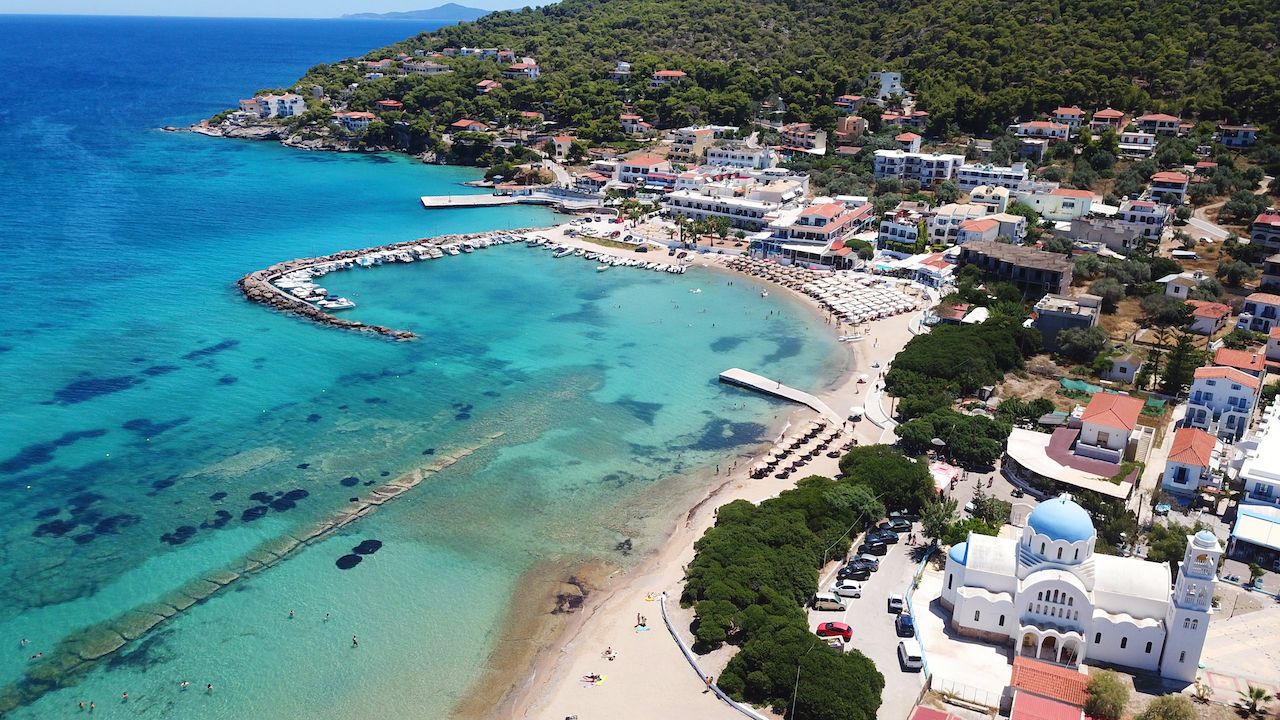
Photo: Aerial-motion/Shutterstock
Tell any local that you’ve had enough of the city’s hustle and bustle and they’ll each give you the exact same advice: visit Agistri. The tiny isle in the Saronic Islands boasts turquoise waters, sandy beaches, and awesome diving spots. You’ll also find great food and peaceful villages.
In stark contrast to Piraeus and Athens, the tranquil atmosphere and easygoing attitude will have you believing that you magically transported to the Caribbean. And the best part about it is that it’s only about an hour away from Piraeus, with ferry boats departing five times a day. If you need to recharge your batteries, a day excursion to Agistri is guaranteed to do the trick.